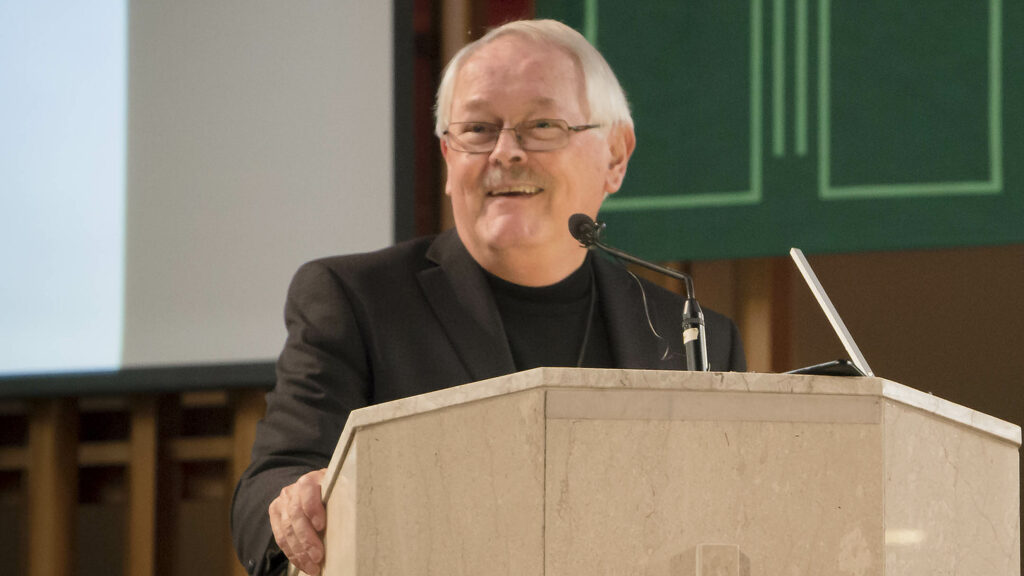Jesus’ death washes everything clean, including our ignorance and sin. That’s the clear message from Luke’s account of his death.
As we know, we have four Gospels, each with its own take on the passion and death of Jesus. As we know too these Gospel accounts are not journalistic reports of what happened on Good Friday but more theological interpretations of what happened then. They’re paintings of Jesus’ death more so than news reports about it and, like good art, they take liberties to highlight certain forms so as to bring out essence. Each Gospel writer has his own interpretation of what happened on Calvary.
For Luke, what happened in the death of Jesus is the clearest revelation, ever, of the incredible scope of God’s understanding, forgiveness, and healing. For him, Jesus’ death washes everything clean through an understanding, forgiveness, and healing that belies every notion suggesting anything to the contrary. To make this clear, Luke highlights a number of elements in his narrative.
First, in his account of Jesus’ arrest in the Garden of Gethsemane, he tells us that immediately after one of his disciples struck the servant of the high priest and cut off his ear, Jesus touched the man’s ear and healed him. God’s healing, Luke intimates, reaches into all situations, even situations of bitterness, betrayal, and violence. God’s grace will ultimately heal even what’s wounded in hatred.
Then, after Peter denied him three times and Jesus is being led away after his interrogation by the Sanhedrin, Luke tells us that Jesus turned and looked straight at Peter in a look that made Peter weep bitterly. Everything in this text and everything that comes after it suggests that the look from Jesus that caused Peter to weep bitterly was not one of disappointment and accusation, a look that would have caused Peter to weep in shame. No, rather it was a look of such understanding and empathy as Peter had never before seen, causing him to weep in relief, knowing that everything was alright and he was alright.
And when Luke records Jesus’ trial before Pilate, he recounts something that’s not recorded in the other Gospel accounts of Jesus’ trial, namely, Pilate sending Jesus to Herod and how the two of them, bitter enemies until that day, “became friends that same day.” As Ray Brown, commenting on this text puts it, “Jesus has a healing effect even on those who mistreat him.”
Finally, in Luke’s narrative, we arrive at the place where Jesus is crucified and as they are crucifying him, he utters the famous words: Father, forgive them for they know not what they do. Those words, which Christians forever afterwards have taken as the ultimate criterion as to how we should treat our enemies and those who do us ill, encapsulate the deep revelation contained in Jesus’ death. Uttered in that context as God is about to crucified by human beings, these words reveal how God sees and understands even our worst actions: Not as ill-will, not as something that ultimately turns us against God or God against us, but as ignorance – simple, non-culpable, invincible, understandable, forgivable, akin to the self-destructive actions of an innocent child.
In that context too, Luke narrates Jesus’ forgiveness of the “good thief”. What Luke wants to highlight here, beyond the obvious, are a number of things: First, that the man is forgiven not because he didn’t sin, but in spite of his sin; second, that he is given infinitely more than he actually requests of Jesus; and finally, that Jesus will not die with any unfinished business, this man’s sin must first be wiped clean.
Finally, in Luke’s narrative, unlike the narratives of Mark and Matthew, Jesus does not die expressing abandonment, but rather dies expressing complete trust: “Father, into your hands I commit my spirit”. Luke wants us to see in these words a template for how we can face our own deaths, given our weaknesses. What’s the lesson? Leon Bloy once wrote that there is only one true sadness in life, that of not being a saint. At the end of the day when each of us face our own death this will be our biggest regret, that we’re not saints. But, as Jesus shows in his death, we can die in (even in weakness) knowing we are dying into safe hands.
Luke’s account of the passion and death of Jesus, unlike much of Christian tradition, does not focus on the atoning value of Jesus’ death. What it emphasizes instead is this: Jesus’ death washes everything clean, each of us and the whole world. It heals everything, understands everything, and forgives everything – despite every ignorance, weakness, infidelity, and betrayal on our part. In John’s passion narrative, Jesus’ dead body is pierced with a lance and immediately “blood and water” (life and cleansing) flow out. In Luke’s account, Jesus’ body is not pierced. It doesn’t need to be. By the time he breathes his last he has forgiven everyone and everything has been washed clean.

